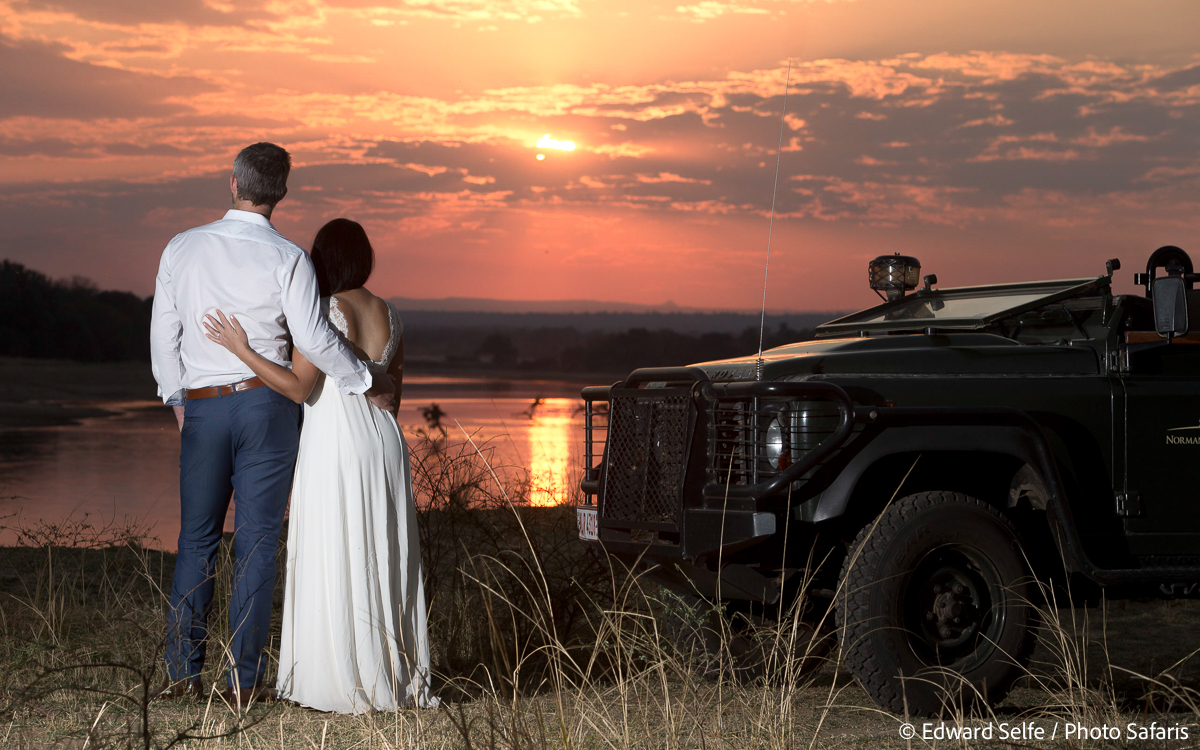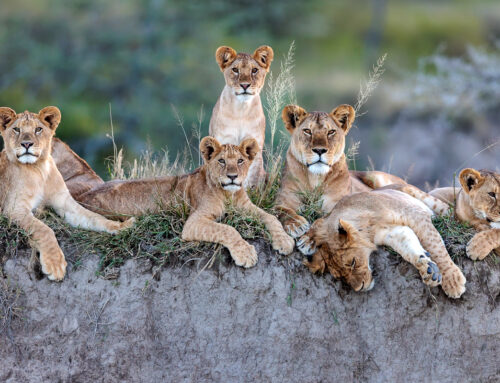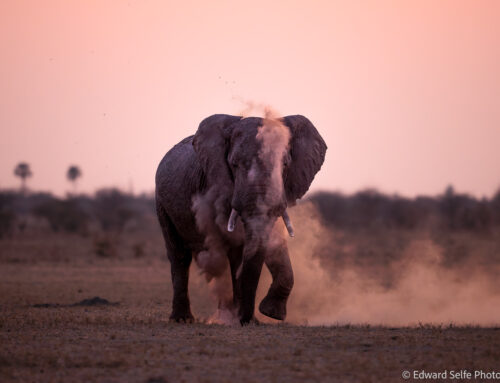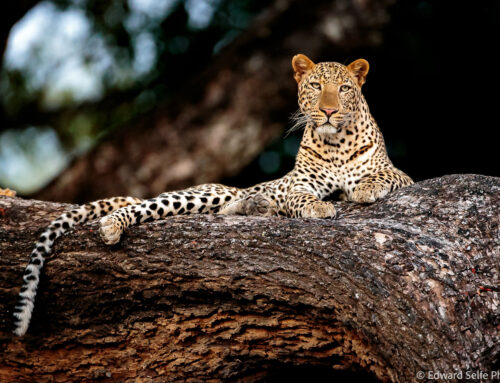It’s a common event: a beautiful sight, which just doesn’t come out on your camera how it looks to your eyes… There are various reasons for this, but the most common is probably that your camera cannot capture the range of tones (we call it dynamic range) that your eyes can. In other words, while your eyes can see detail in dark shadows and bright areas at the same time, a camera cannot. The camera has to choose whether to capture the lights, the darks or the midtones (and sacrifice both the whites and blacks).
One such occasion came about on a recent safari. A lioness had climbed a tree – which was unusual in itself as they are not well known for this in Luangwa. The light was dropping and the orange glow of sunset was showing through the canopy of trees behind her. Taking a photograph with normal exposure (no underexposing) would leave the lioness quite dark, and bleach out the sunset highlights behind. To see why, refer to this blog post about how camera meters function.
Underexposing by around 1 stop would expose correctly for the sunset behind and give wonderful orange colours. But the lioness and the tree would be far too dark.
This is where the use of a flash can be handy. Attaching an external flash gun to the top of the camera and setting it to automatic exposure mode (usually called ETTL) with a flash adjustment of -1 will usually be a good starting point to correctly expose the subject.
In effect, you now have two light sources – the sunset and the flash. With the exposure on the camera set to -1, the sunset colours will show through, but the whole image will be too dark. The burst of light from the flash will illuminate the subject (the lioness and the tree) but will have no effect on the background sunset. Flash aficionados think about this as two exposures – the first being the camera’s underexposed image of the sunset with silhouetted lioness, and the second being the brief burst of light from the flash-gun.
Here’s the final result – all we needed was for the lioness to turn her head a little! She didn’t but the chance to practice this technique was useful in preparing for the next time!
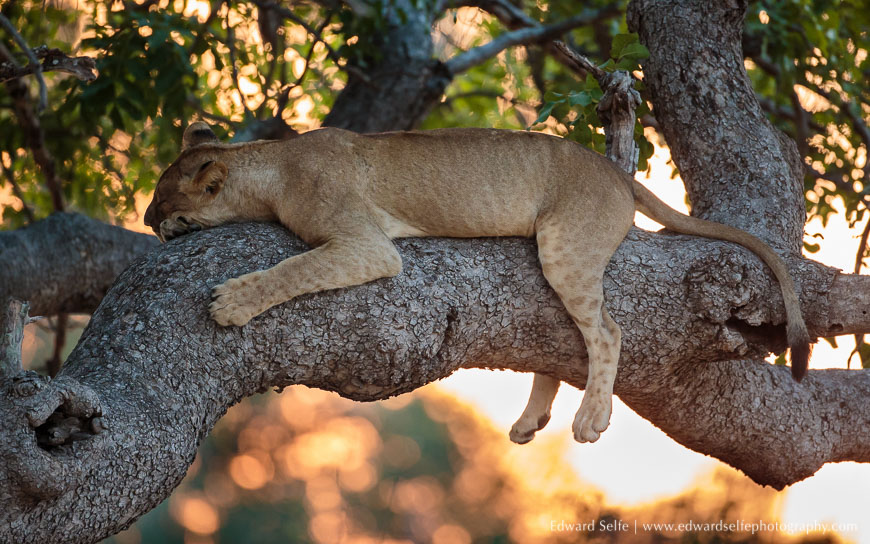
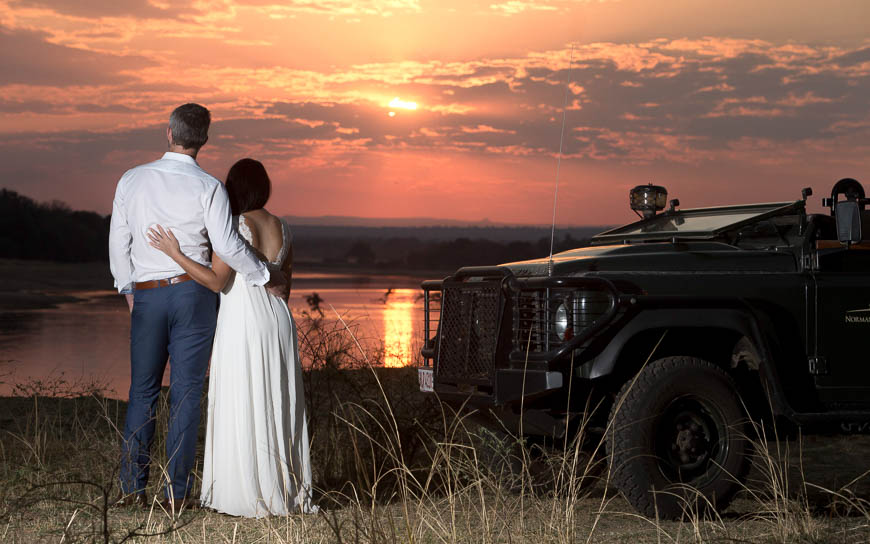
Comments
![]() By Andre Erlich: Another solution of course would be to bracket…5 pics at -2, -1, 0, +1, +2 would probably do the job cover the dynamic range.
By Andre Erlich: Another solution of course would be to bracket…5 pics at -2, -1, 0, +1, +2 would probably do the job cover the dynamic range.
Enjoy reading your blogs
Best regards
Andre

